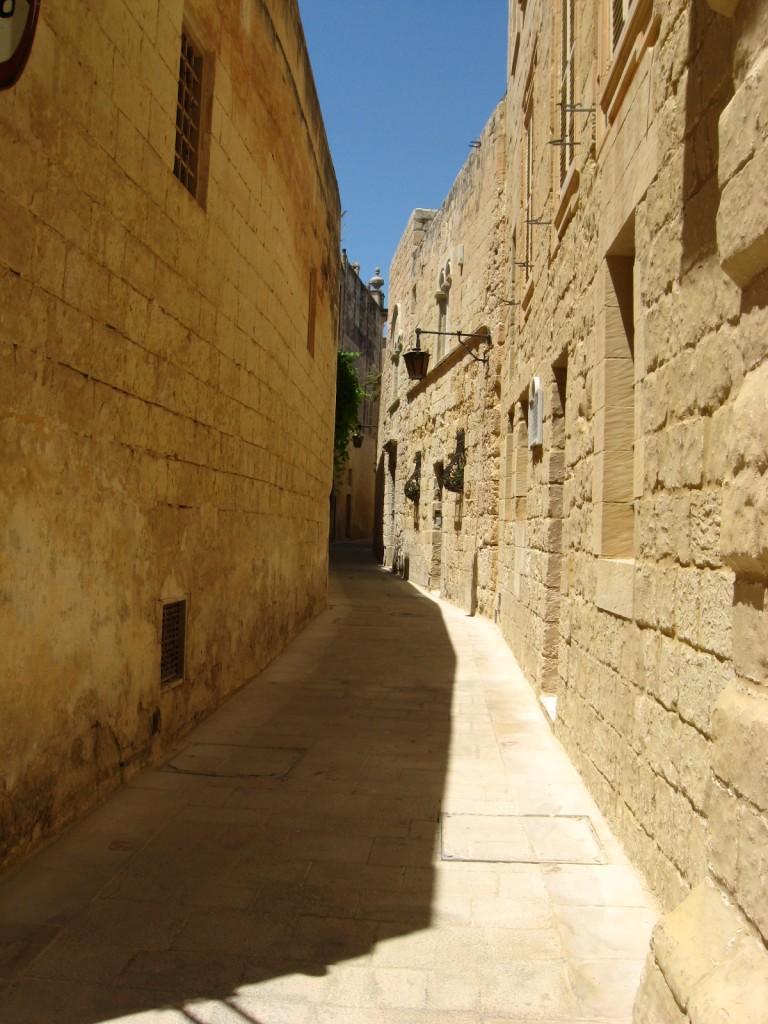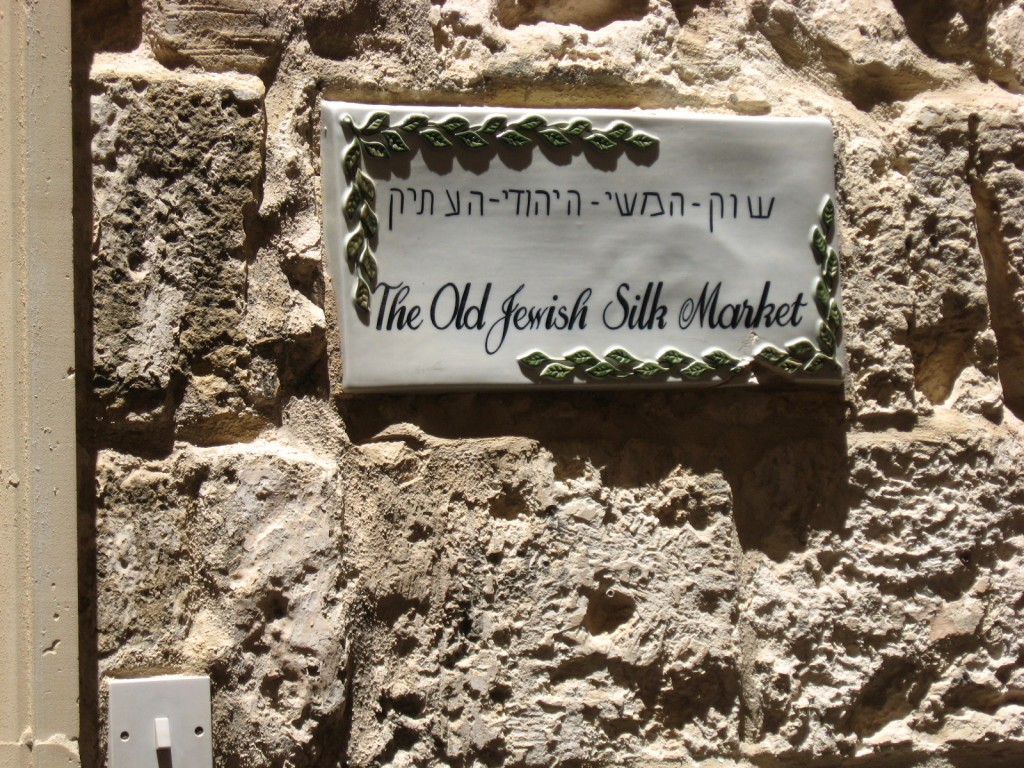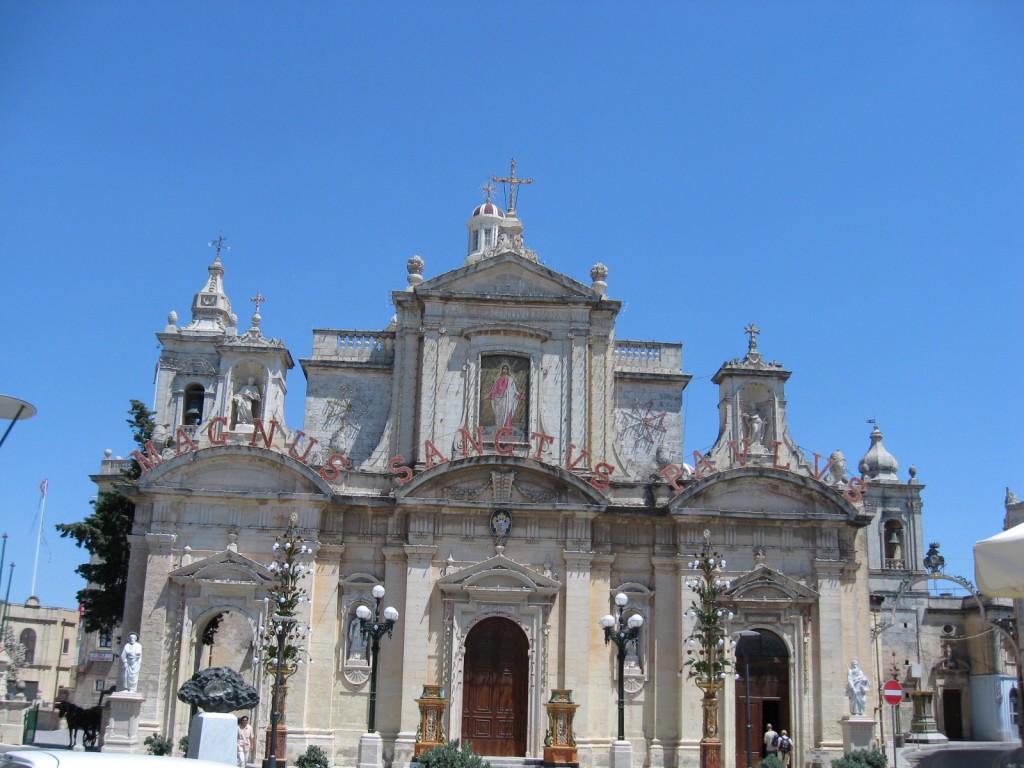It’s only my fourth day here and either I had already slid into full vacation mode or a Maltese state of mind because I had another lazy morning. Either way, I decided I wasn’t going to rush to do anything today or for the rest of the week.
After my usual morning cup of tea, I did some shopping for dinner and found it surprisingly hard to find a fish market to buy fish for dinner. (The map in my initial post shows a fish market near the Lower Barrakka Gardens but I didn’t have this map on my trip.) Valletta has few supermarkets the way Americans would think of a supermarket and none within walking distance of my flat. It’s mostly a more traditional style of shopping – a butcher shop, a fruit and vegetable store, a bakery, etc. so you get what you need from each specialized vendor. There is a Wembley’s store but, though it sells a range of products, it’s still not a full-fledged American style supermarket. (Patrick would point one out to me on the way to the airport on Sunday – I think it’s in Floriana – but that came a bit late to be useful for my stay.)
I caught the public bus to Mdina (pronounced im-DEE-nah). By the way, the bus is probably the cheapest and easiest way to get around Malta. I bought a one week pass giving me unlimited rides for 12 euros (about $15.25) and the same pass is 6.50 for residents. The island is small enough that the buses have good coverage and are reasonably (and I stress reasonably) reliable. (I’ll have a good bus story as part of Friday’s entry.) You can get pretty much anywhere in forty-five minutes or less.
The system is relatively new. Malta’s old style un-air conditioned, privately owned, and questionably reliable buses are rarely seen on the streets anymore but they are clearly and, I think dearly, remembered. The really old-style buses adorn t-shirts, canvas bags, and all sorts of items geared toward tourists. The new buses are air conditioned and have electronic signs that announce upcoming stops in both Maltese and English though I found some circumstances where these, too, can be unreliable. However, the drivers are friendly, generally knowledgeable (except when they’re not) about the routes, and helpful when they can be.
The bus trip to Mdina took about 20 minutes and dropped me off a few blocks from the Main Gate of the city. Mdina is the former capital of Malta and is now known as the Silent City because it was essentially abandoned when Valletta was built as the new capital. I think only a few hundred people live in the city now. Many more live in Rabat (which actually means suburb in Maltese – or so I was told). Mdina was chosen as the capital because it sits on a high hill and was thought to be easily defensible.
The streets of Mdina are narrow and full of angles supposedly to give someone a chance to escape the flight of an arrow. Climbing to the top of the bastions, it becomes clear why, if altitude was important, Mdina was selected as the early capital. From this height, one can see to the Mediterranean looking east and much of the rest of the island looking in any other direction. There is a restaurant on the bastions called Fontanella Tea Garden that has spectacular views of the island. (If you look closely at the distant center of the photograph below, you can see a domed structure. This is Our Lady of Mount Carmel Church in Valletta which you can also see in one of the photos taken as we left the harbor on Saturday’s boat ride to Gozo.)
supposedly to give someone a chance to escape the flight of an arrow. Climbing to the top of the bastions, it becomes clear why, if altitude was important, Mdina was selected as the early capital. From this height, one can see to the Mediterranean looking east and much of the rest of the island looking in any other direction. There is a restaurant on the bastions called Fontanella Tea Garden that has spectacular views of the island. (If you look closely at the distant center of the photograph below, you can see a domed structure. This is Our Lady of Mount Carmel Church in Valletta which you can also see in one of the photos taken as we left the harbor on Saturday’s boat ride to Gozo.)
At Fontanella, I had a traditional ftira (a Maltese sandwich) for lunch. It was tuna, tomato paste, cannellinni, and herbs on a freshly baked local bread and – the beverage for which I am developing quite a taste preference – Cisk.
I wandered around Mdina some more after lunch and walked down to the Greek Gate. A worker on the ditch project told me this was the entrance to the Greek quarter and is now used for large vehicles to pass through because there’s insufficient room at the Main Gate. He also told me that some of the vehicles that pass through are not what tourists want to see. Then, he directed me to the Jewish (or as he called it Hebrew) Quarter and after searching a bit I was able to find one building (with a surprising neighbor) so identified.
Walking down into Rabat, I wandered around until I found Saint Paul’s Church
and catacombs. Unfortunately, most of the pictures I took inside the church weren’t worth saving so you won’t see any of the bad ones. But I do have a few worth viewing so you can see those. There are also some decent pictures of the catacombs (as well as that interesting neighbor to the Jewish Silk Market) if you’re interested.
I should mention that there is another famous set of catacombs in Rabat called Saint Agatha’s but I elected not to go there because I was hot, tired, and figured if you’ve seen one catacomb… So I trundled back to a bus stop and returned to Valletta. I later learned, however, that my ‘seen one seen them all’ assumption may not have been correct because I was told the catacombs at Saint Agatha’s are quite different from those at Saint Paul’s. No matter.
When I got back to the flat, I grabbed my book, a cold Cisk from the fridge, and climbed to the roof for my daily ritual of reading, drinking a beer, and gazing out to the sea. For dinner Monday I had a home cooked meal.


